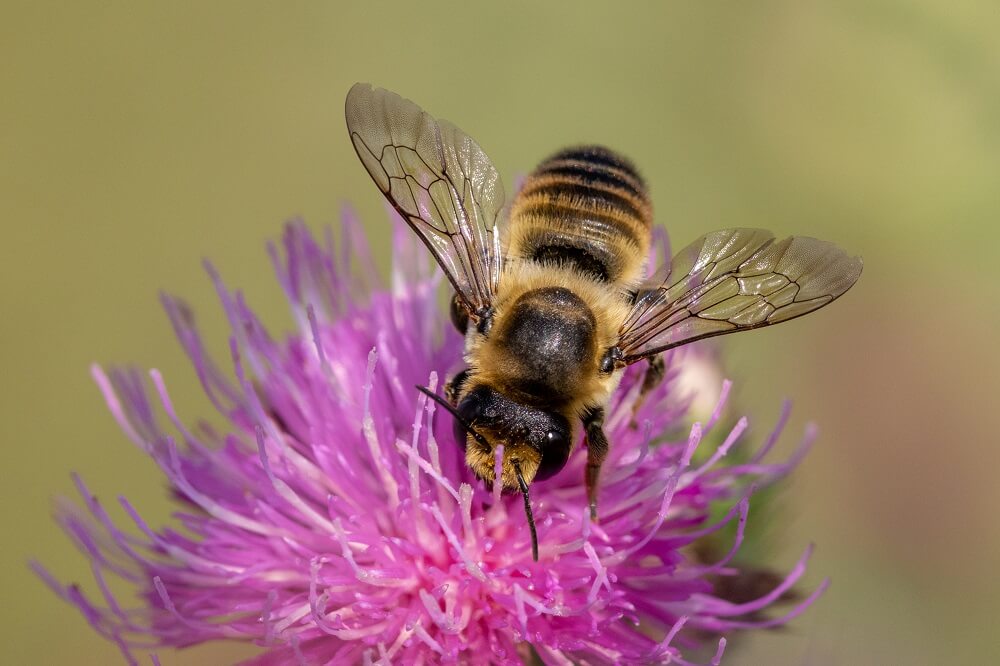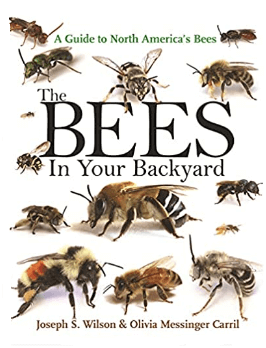Here’s a fact that might surprise you:
There are more than 20,000 bee species worldwide. But now that brings us to the million-dollar question…
How Long Do Bees Live?
The answer?
It depends.
More specifically, it depends on the bees’ species, job duties, and external factors such as climate.
But with that in mind, let’s consider the lifespan of some popular types of bees:
Honeybee Lifespan:
- Queen honeybee: 2-4 years
- Worker honeybee: 6-24 weeks
- Drone honeybee: 55 days
Bumblebee Lifespan:
- Queen bumblebee: 1 year
- Worker bumblebee: 28 days
- Drone bumblebee: 14 days
Mason Bee Lifespan:
- Female mason bee: 4 weeks
- Male mason bee: 55 days
Carpenter Bee Lifespan:
- Female carpenter bee: up to 3 years
- Male carpenter bee: 1 year
How Long Do Honeybees Live?
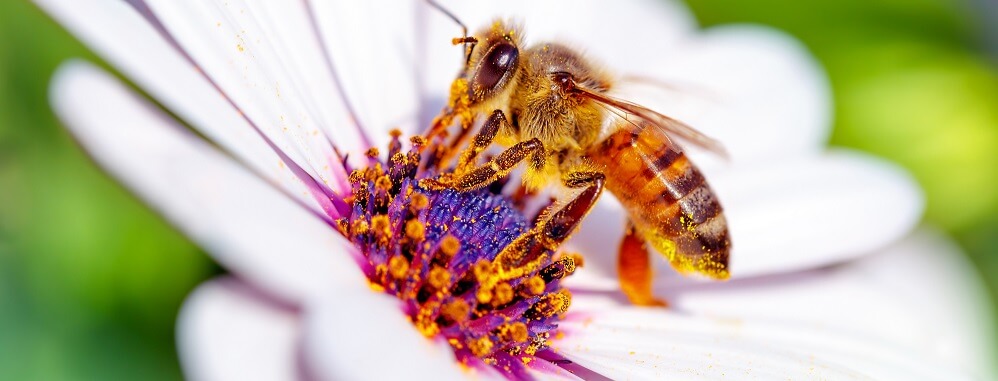
- Queen honeybee: 2-4 years
- Worker honeybee: 6-24 weeks
- Drone honeybee: 55 days
A single honeybee colony can have between 20,000 and 60,000 bees, each performing a specific job.
So you might be wondering more about, “How long do honey bees live?”
Let’s start with the royal highness:
The Queen Honeybees Lifespan
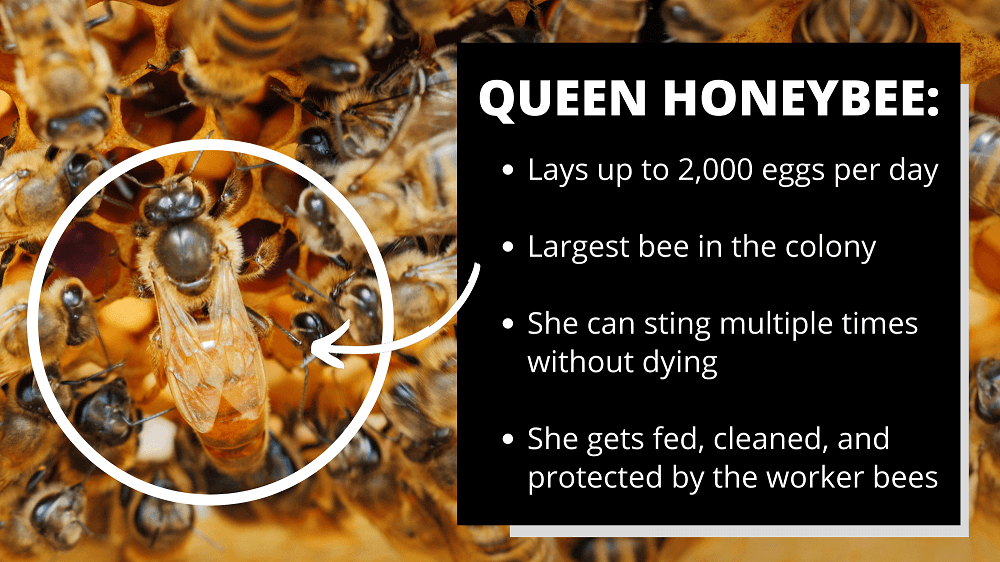
The queen honeybee lives an average of 2 to 4 years. This means she lives about eight times longer than the average worker bee.
So why does the queen live that long?
Simply put, she’s well taken care of. The worker bees feed, clean, and protect her 24/7.
Since the queen honeybee doesn’t have to work outside the hive, her wings and body don’t wear out as fast as the other bees.
But let’s not forget:
The queen honeybee plays a crucial role in the hive.
She’s the only female that can lay fertilized eggs, so the colony’s future depends on her. A healthy queen honeybee can lay up to 2,000 eggs per day during peak season.
But nothing lasts forever.
The queen doesn’t live indefinitely. As she gets older, her pheromone production decreases, and egg-laying gradually slows. When a queen begins to deteriorate, the worker bees will raise a new one for replacement.
Related: What Do Bees Eat?
The Worker Honeybees Lifespan
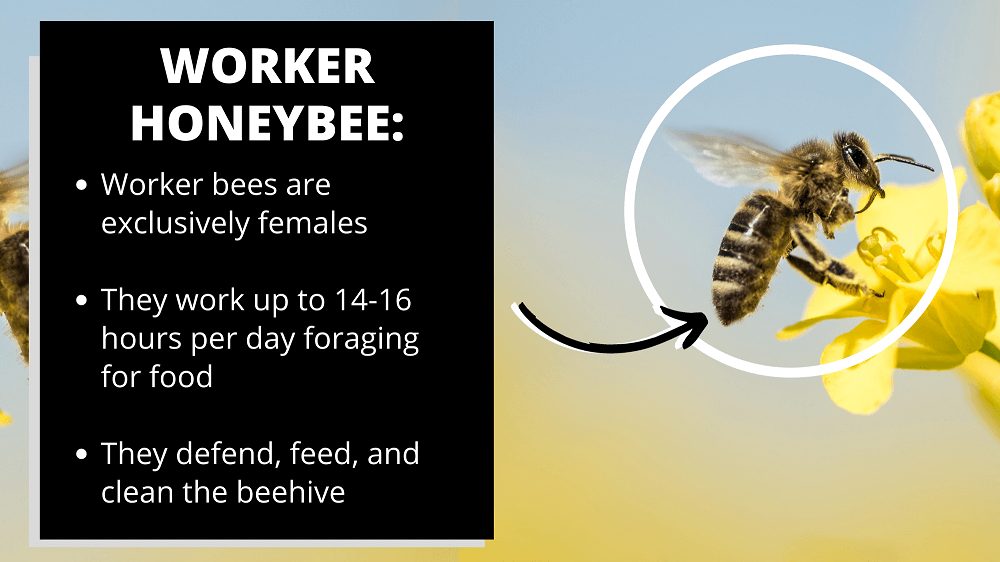
How long does a worker bee live?
Well, the lifespan of a worker honeybee depends on which season she was born.
- The lifespan of worker bees born in the spring & summer: 6 weeks
- The lifespan of worker bees born in the fall: up to 6 months
Now you might be asking:
Why does a worker bee’s lifespan depend on which season it was born in?
It’s because worker bees born in the spring and summer have shorter, busier lives. There’s plenty of work to do because spring and summer are the peak seasons.
And it’s not easy.
Worker bees that forage for food generally spend nearly every hour of daylight outside. This means they’re working 14 to 16 hour days.
So I won’t sugarcoat it:
Forager bees literally work themselves to death.
On the other hand, worker bees that are born in the fall live for up to 6 months. They have a totally different lifestyle than spring-born worker bees, but that doesn’t mean their job isn’t important.
Honey bees born in the fall will need to be particularly strong and healthy since they’re responsible for keeping the hive alive throughout the winter months.
They’ll also have the vital task of raising a new generation of bees, allowing those young bees to go out and forage for pollen and nectar in the spring.
Related: How Long Do Bumble Bees Live?
The Drone Honeybees Lifespan
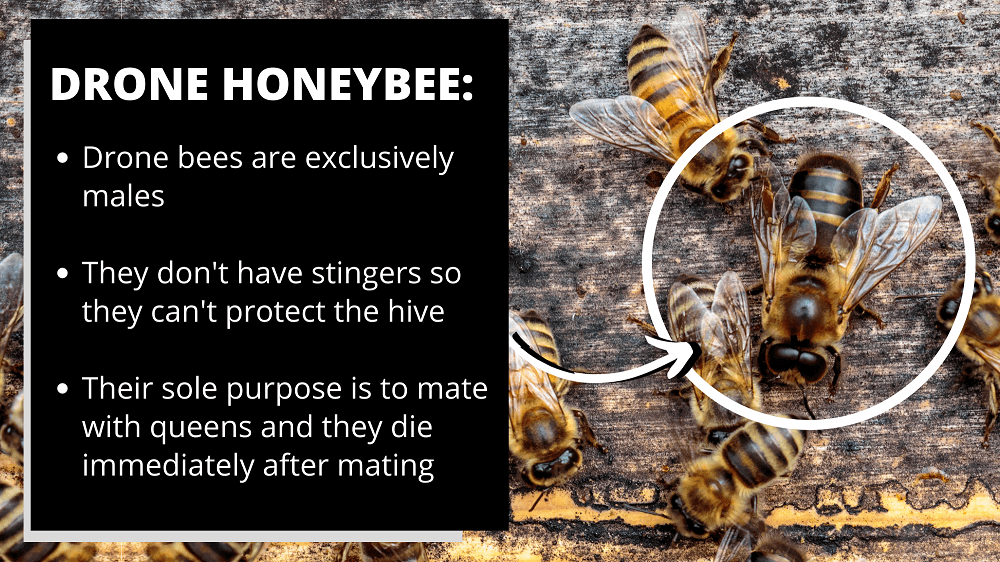
Drones are the male bees in the honey bee colony. A drone has an average lifespan of 55 days, which can vary depending on seasonal changes.
Drone honeybees don’t have stingers, so they can’t defend the hive. And they don’t have the body parts to collect nectar or pollen, so they can’t feed the hive.
But they have one very important purpose:
To mate with the queen honeybee.
Remember, a healthy queen can lay up to 2,000 eggs per day. But unfortunately for drone honeybees, they die shortly after mating because their reproductive organs get torn from their bodies.
But here’s the thing:
While most drones only live about 55 days, there are some exceptions.
A drone will survive several months during the summer season if he can’t find a queen to mate with. But once fall arrives, the worker bees will remove him from the hive because they no longer need him.
Related: Do Honey Bees Sting?
How Long Do Bumble Bees Live?
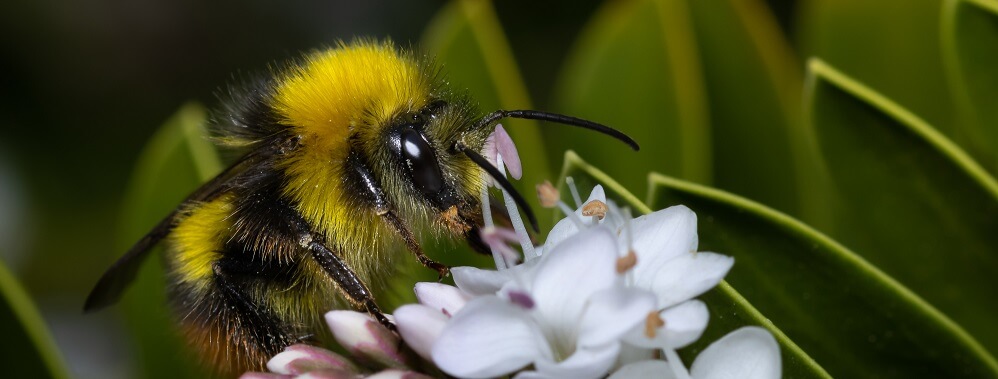
- Queen bumblebee: 1 year
- Worker bumblebee: 28 days
- Drone bumblebee: 14 days
A bumblebee’s lifespan is largely determined by its role in the colony and the species of bumblebee. There are over 250 species of bumblebees.
How Long Does a Queen Bumblebee Live?
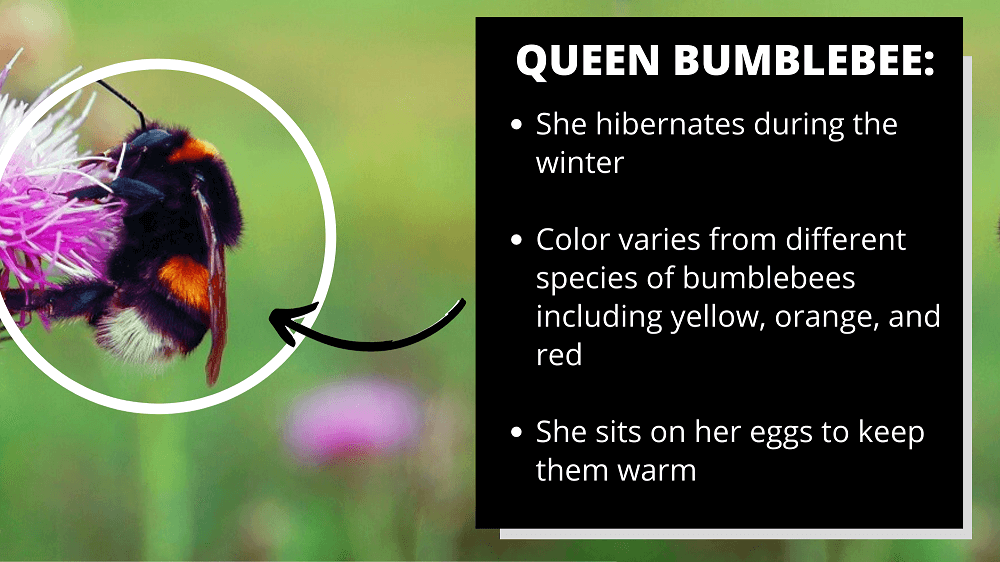
A queen bumblebee lives about one year, making her the longest living colony member.
The queen bumblebee is born in the late summer. In the fall, she departs the nest to mate, eat heavily, and seek a location to hibernate during the winter.
Here’s the interesting part:
Queen bumblebees are the only members of the colony that survive the winter. She hibernates while the worker bees die off.
Once spring arrives, the queen begins laying eggs and building her new colony.
Eventually, new queens are born in the late summer, the old queen passes away, and the cycle repeats, with new queens starting new hives.
How Long Do Worker Bumblebees Live?

The lifespan of a worker bumblebee depends on her role in the hive.
For example, there are foragers that gather pollen and nectar for food. Then, “house bees” create honey, feed baby bees, and protect the hive.
- Forager worker bumblebee: 3-week lifespan
- House worker bumblebee: 12-week lifespan
House bumblebees live longer because they aren’t wearing themselves out like forager bees do. Forager bees work 12-16 hours daily outside of the hive to gather food
As previously mentioned, worker bumblebees never survive the winter. Only the queen bumblebee survives the winter because she hibernates. Once spring arrives, the queen bumblebee will lay new eggs.
Related: Do Bumble Bees Make Honey?
How Long Do Drone Bumblebees Live?

Drone bumblebees are males, and they’re the shortest-lived members of the hive.
Drone bumblebees live about 14 days, on average.
They’re hatched around the same time as new queen bumblebees, except they don’t have stingers. Since they don’t have stingers, they can’t defend the hive.
Drone bumblebees leave the colony and fly far away – sometimes for many miles – to locate a new queen from another colony. Many drones don’t end up mating, and after about 14 days, they all die.
How Long Do Mason Bees Live?
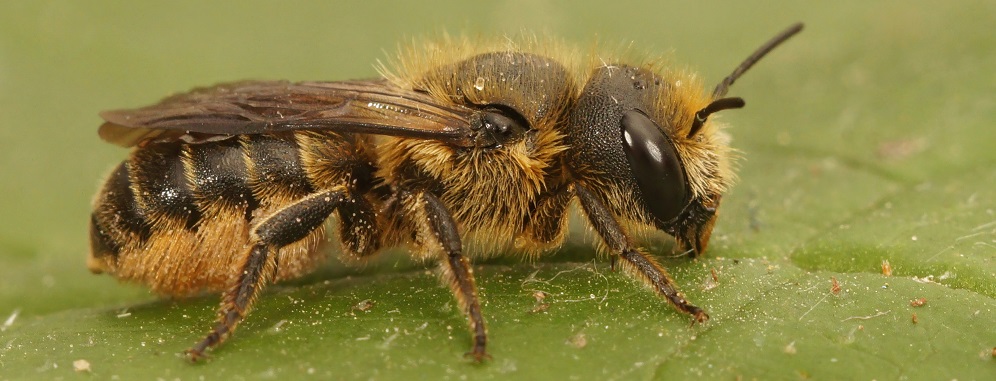
- Female mason bee: 4 weeks
- Male mason bee: 55 days
Mason bees are solitary, which means they don’t live in a hive.
These bees lay their eggs inside existing tunnels, like those left by beetles.
You can also attract local mason bees to nest in a bee hotel if you’re a bee lover.
Every female mason bee is a “queen” who produces eggs and raises baby bees independently. She doesn’t have the help of a well-organized colony.
How Long Do Female Mason Bees Live?

A queen mason bee lives for about 4 weeks and lays 1 to 2 eggs each day.
Females will search for holes made by other insects in wood or walls, cleaning out these holes to lay their eggs. Female mason bees aren’t territorial. They’re perfectly happy building nests next to other mason bees.
During the winter, a fully developed adult bee remains in its cocoon within the nest. When temperatures rise in spring, the adult bees begin to emerge and start the process of mating and pollination.
How Long Do Male Mason Bees Live?

Male mason bees spend most of their time flying around nests, waiting for female mason bees to emerge.
Male mason bees live about 55 days, though some have been known to live up to 90 days. This gives them ample time to mate with females.
If a female is spotted, the male mason bee mates with her immediately. Unlike other male bees, male mason bees can mate multiple times without dying.
There are about 140 species of mason bees in North America, and they’re all solitary bees.
How Long Do Carpenter Bees Live?

- Female carpenter bee: up to 3 years
- Male carpenter bee: 1 year
Carpenter bees are usually solitary bees, although some species have simple social nests where moms and daughters live together.
Carpenter bees are the largest native bees to the US. But they’re very gentle, with some people nicknaming them “gentle giants.”
Carpenter bees and bumblebees look similar, except carpenter bees aren’t fuzzy with hair. They have shiny abdomens that are usually black.
Related: How to Get Rid of Carpenter Bees Naturally
How Long Do Female Carpenter Bees Live?

Female carpenter bees have long lifespans that can reach up to 3 years.
In some species of carpenter bees, newly hatched daughters live together with their mothers. The daughters will help defend the nest while the mother lays eggs and feeds the babies.
Carpenter bees’ lifespan is mostly determined by the physical wear and tear caused to their bodies. The health of the original queen declines as a result of the nest-building and foraging routines she goes through during the season.
The death of the mother carpenter bee allows one of her young to inherit the nest.
How Long Do Male Carpenter Bees Live?

Male carpenter bees typically live up to one year.
Carpenter bees will mate in the spring and look for a location to construct their nest. Once they’ve found a suitable location, the female bee drills into a piece of wood while the male protects her from rivals and intruders.
While male carpenter bees may seem aggressive because they’ll buzz around you, they don’t have a stinger. Only female bees have stingers.
But despite not having a stinger, the male carpenter bee still does a great job at warding off intruders.
FAQs about “How Long Do Bees Live?”
- Can bees live up to five years?
- How do bees usually die?
- Why do bees have a short lifespan?
- What happens when a queen bee dies?
- What do bees do with dead bees?
- How do bees survive the winter?
- Do bees go to water to die?
- How many bees die in a day?
- How long can a bee survive without food?
- How long do bees live after stinging?
- How long do bees live without a queen?
Can bees live up to five years?
It can happen, but it’s very rare. One example of this is queen honeybees which have been reported to live up to five years.
However, sometimes people ask, “How long do drone bees live? Can they live up to five years?” And the answer is no; drones generally have very short lifespans compared to queen bees.
—> Go back to the “How Long Do Bees Live?” FAQs
More to Explore:
How do bees usually die?

It depends. There is no one “typical” way, although I’d say most bees probably just reach the end of their life and die when it’s time.
Other bees get eaten by predators like birds. Some male bees die after mating. Honeybees can die after stinging.
It just varies.
—> Go back to the “How Long Do Bees Live?” FAQs
More to Explore:
Why do bees have a short lifespan?
In many cases, it’s because bees are hardworking insects that wear themselves down. They have short but busy lives spent foraging for food, nesting, and defending themselves.
Many bees even work from sun up to sundown, which can be over 12 hours daily.
—> Go back to the “How Long Do Bees Live?” FAQs
More to Explore:
What happens when a queen bee dies?
In a honeybee hive, worker bees replace queen bees with new queens. Queen baby bees are selected intentionally and fed a special diet.
When the new virgin queen hatches, she’ll fly away to mate with drones and return to the hive to begin laying eggs.
In some cases, the process of replacing the queen bee fails. If this happens under a beekeeper’s supervision, the beekeeper will need to step in and provide a new queen. If they don’t, the hive won’t survive.
—> Go back to the “How Long Do Bees Live?” FAQs
More to Explore:
What do bees do with dead bees? Do bees collect their dead?
They don’t collect them. But, bees are generally organized and tidy. So when bees die in a colony, the other bees will carry them away from the hive as a way to “clean up.” This also helps prevent disease or the spreading of infections.
—> Go back to the “How Long Do Bees Live?” FAQs
More to Explore:
How do bees survive the winter?
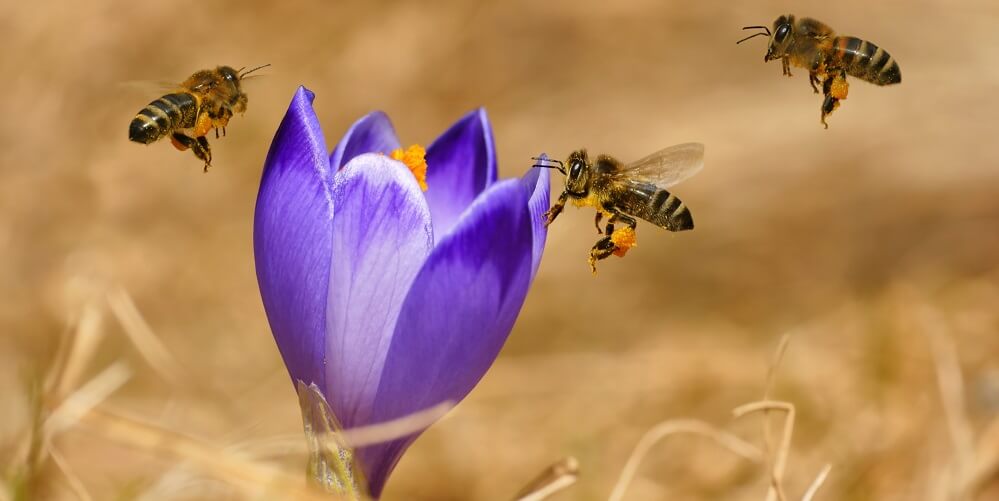
Not all bee species survive the winter.
For example, only the queen bee survives in bumblebee hives because she hibernates. The worker bees die off.
In honeybee hives, the bees huddle together to form a cluster that keeps them warm. Once the temperatures dip below 50°F (10 °C), they start this process.
In the coldest climates, sometimes the bees can’t keep warm despite huddling together. Unfortunately, this leads to their death.
—> Go back to the “How Long Do Bees Live?” FAQs
More to Explore:
Do bees go to water to die?
No. Bees don’t seek out water to die.
That said, bees can’t swim, so sometimes they’ll fall into the water and accidentally drown.
Bees tend to keep foraging until they flutter to the ground and pass away. Honeybees, for example, can also die inside the hive during the winter if they can’t withstand the cold temperatures.
—> Go back to the “How Long Do Bees Live?” FAQs
More to Explore:
How many bees die in a day?
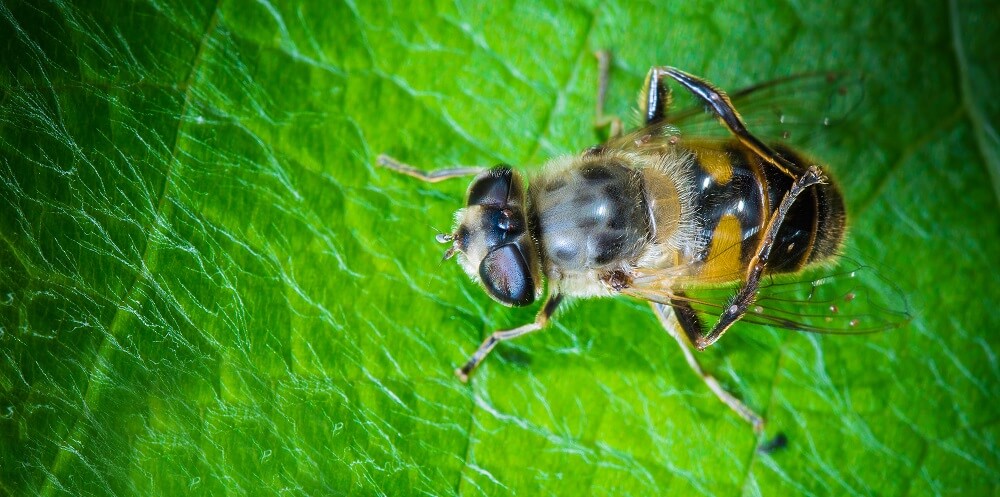
It depends on the bee species (honeybee, bumblebee, mason bee, etc.).
For honeybees, a normal-sized hive can lose 1,000 bees per day in the summer. Fortunately, these losses are quickly replaced since the queen bee can lay up to 2,000 eggs per day.
—> Go back to the “How Long Do Bees Live?” FAQs
More to Explore:
How long can a bee survive without food? How long do bees live indoors?
Bees cannot live more than a day indoors without access to nectar and pollen.
—> Go back to the “How Long Do Bees Live?” FAQs
More to Explore:
How long do bees live after stinging?
Fun fact:
Honeybees are the only bees that die after stinging. They can live for up to a few minutes after stinging.
Other bees like bumblebees, carpenter bees, and mason bees can sting as many times as necessary without dying.
But that said:
Most bees are gentle and only sting when they feel threatened. For example, bees are more likely to sting if you’re touching them or poking around their hive.
—> Go back to the “How Long Do Bees Live?” FAQs
More to Explore:
- How to Keep Bees Away From Hummingbird Feeders
- Do Bees Have Knees?
- Ground Bees: Are They Harmful to Your Yard?
How long do bees live without a queen?
No longer than a few months.
Unless the queen is quickly replaced, the colony she belongs to will not be able to survive. The colony members will dwindle and pass away one by one.
